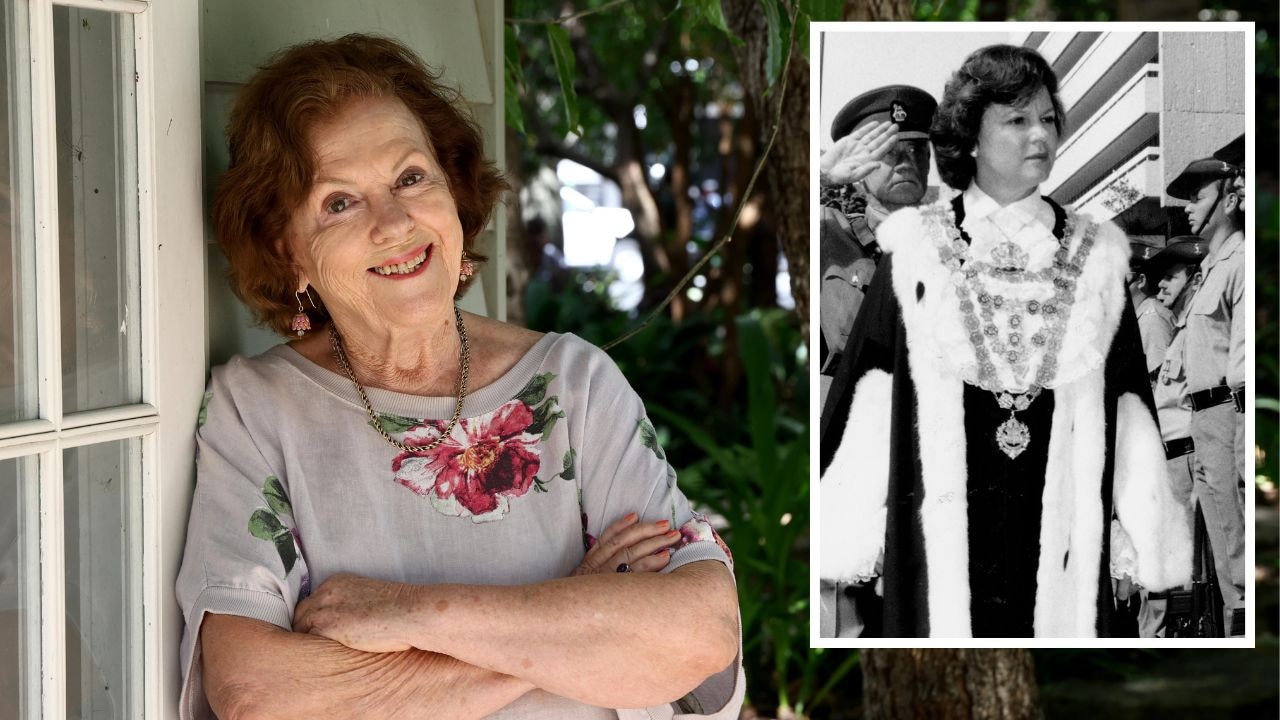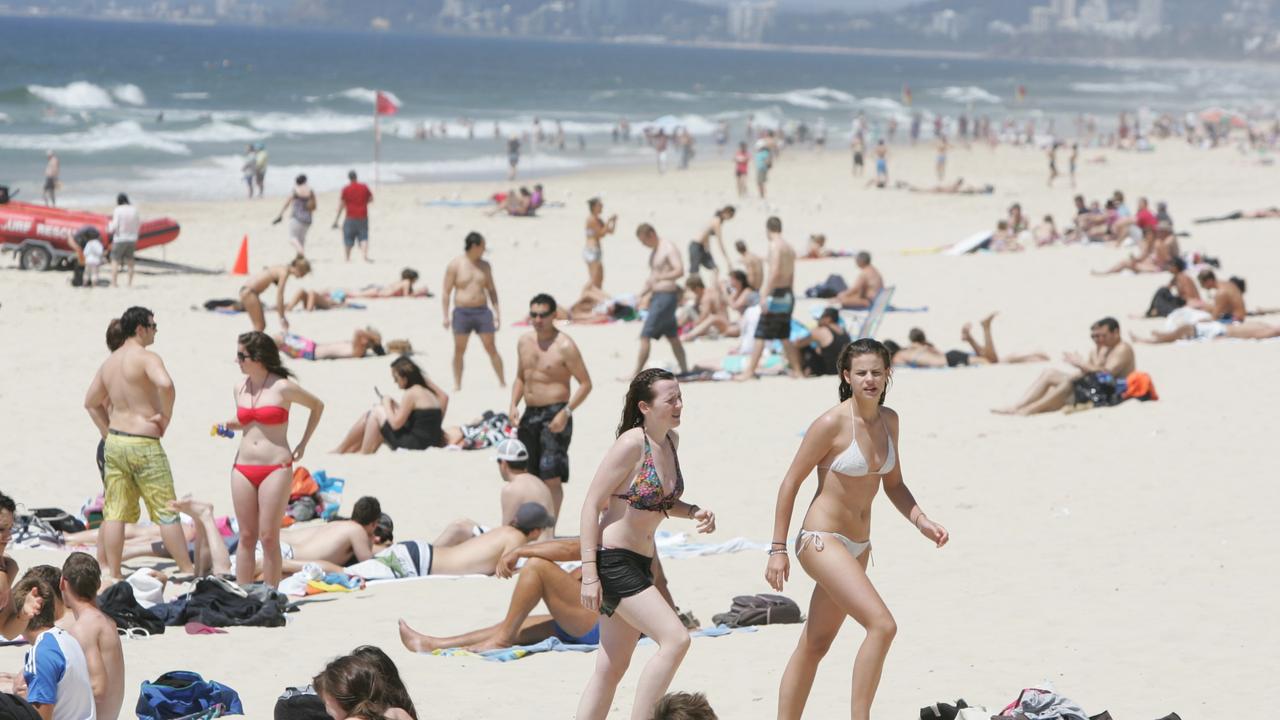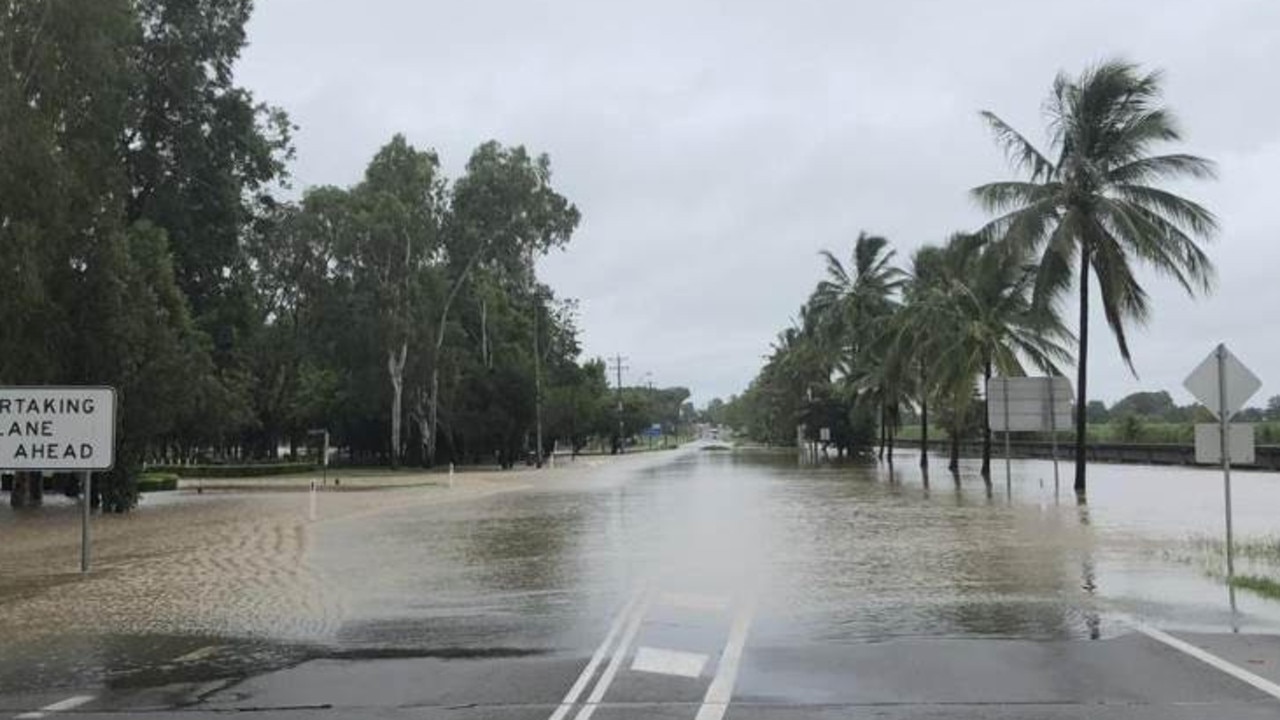Sea World helicopter crash: Inside one of the Gold Coast’s darkest days
Four lives were lost and dozens more changed forever when two helicopters collided over the Gold Coast Broadwater as Jeremy Pierce and Greg Stolz report
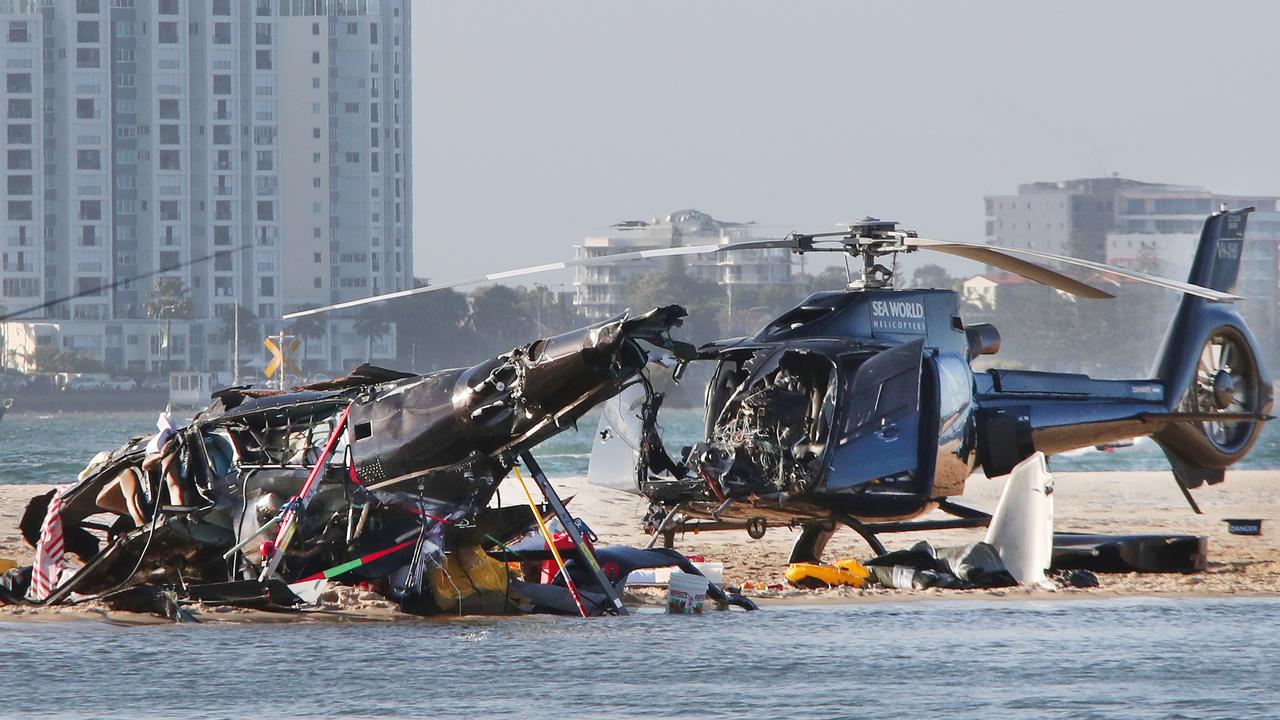
QLD News
Don't miss out on the headlines from QLD News. Followed categories will be added to My News.
It was the kind of stunning Gold Coast summer’s day destined to live long in the memory.
And it has – but for all the wrong reasons.
On January 2, 2023, thousands of holiday-makers packed into the Sea World theme park while boaties and fishermen bobbed happily in the nearby Gold Coast Broadwater in a picture-perfect start to the new year.
But that picture of postcard perfection was about to be blown apart.
The clear waters of the Broadwater would soon be slicked with petrol gushing from the twisted wreckage of a crashed helicopter and the golden shore of a popular sandbank would be strewn with debris and stained with blood, the shrieks of delight from Sea World thrillseekers replaced by screams of terror.
The long-awaited release this week of findings from the Australian Transport Safety Bureau investigation into the disaster did not suggest whether any individual was at fault, but revealed 11 major safety issues.
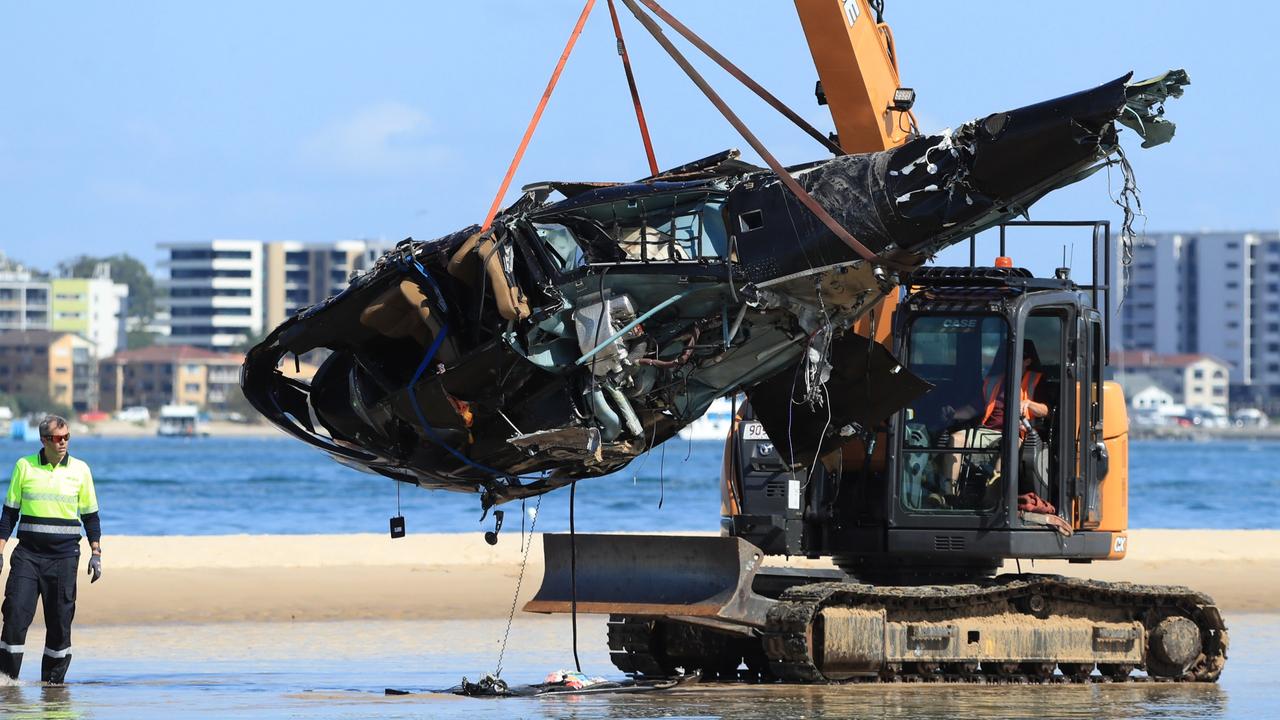
In isolation, none of them were enough to cause the horrific tragedy, but in a perfect storm of moving parts, sliding doors and twisted fates, four lives would be lost and dozens more would be up-ended forever.
British couple Ron and Diane Hughes were in the midst of a long-awaited Aussie holiday.
Shaking off the shackles of a dreary English winter, they were on the Gold Coast visiting Mr Hughes’ family.
The coronavirus pandemic had knocked around travel plans and it had been a while between visits.
To celebrate the visit from her dad and stepmum, Jane Manns bought the couple a helicopter joy flight for Christmas with Sea World Helicopters.
They had planned to take the flight on January 4 – a Wednesday, but in one of those tragic twists of fate which marked so many people linked to the disaster, they change plans and decide to do it on the Monday instead.
Mrs Manns drops them at the Sea World Helicopters terminal and parks the car before waving them off as they walk to the helipad with other passengers.
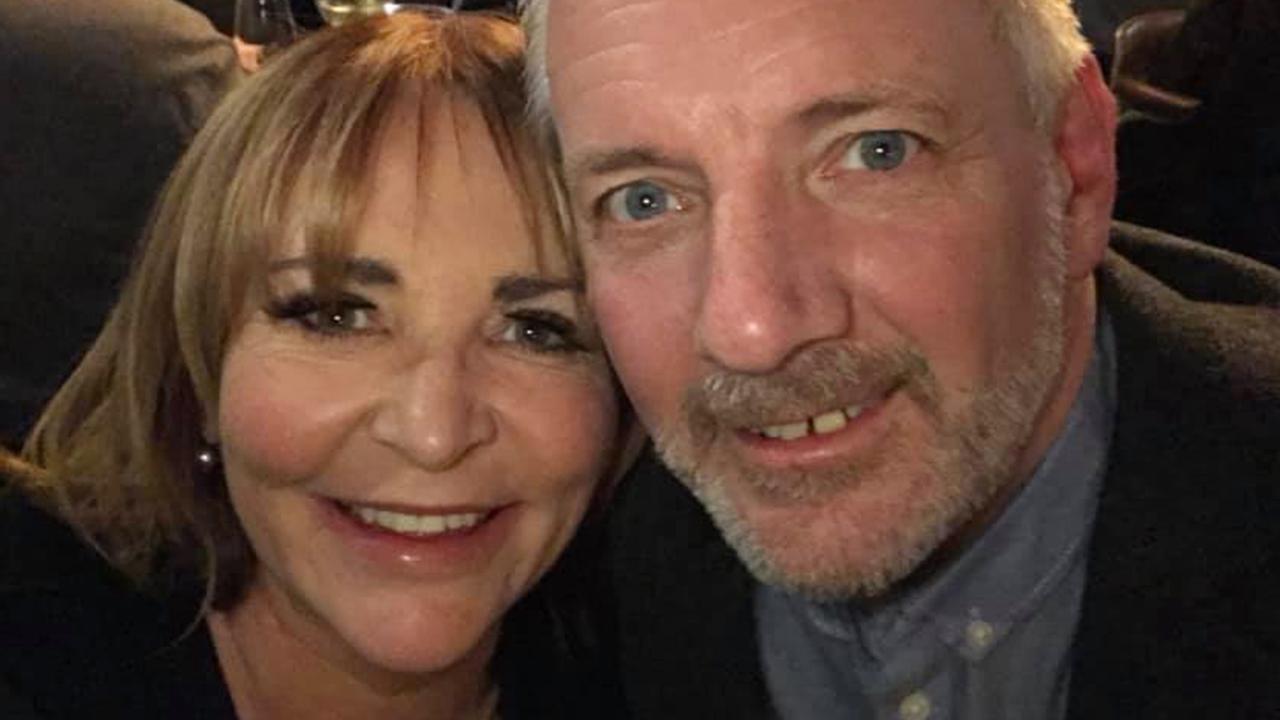
Mrs Manns – who has since lodged a law suit with her children, would never see her father or stepmum alive again.
Sydney’s Tadros family is also at Sea World.
Simon, his wife Vanessa and their 10-year-old son Nicky are “having the time of their lives” on their first holiday in years.
Watching the helicopters in action while they munch on some lunch, Mr Tadros is amazed – and a little apprehensive, at how quickly the flights come and go.
His wife turns and says: “Babe, I’m sure they know what they’re doing.”
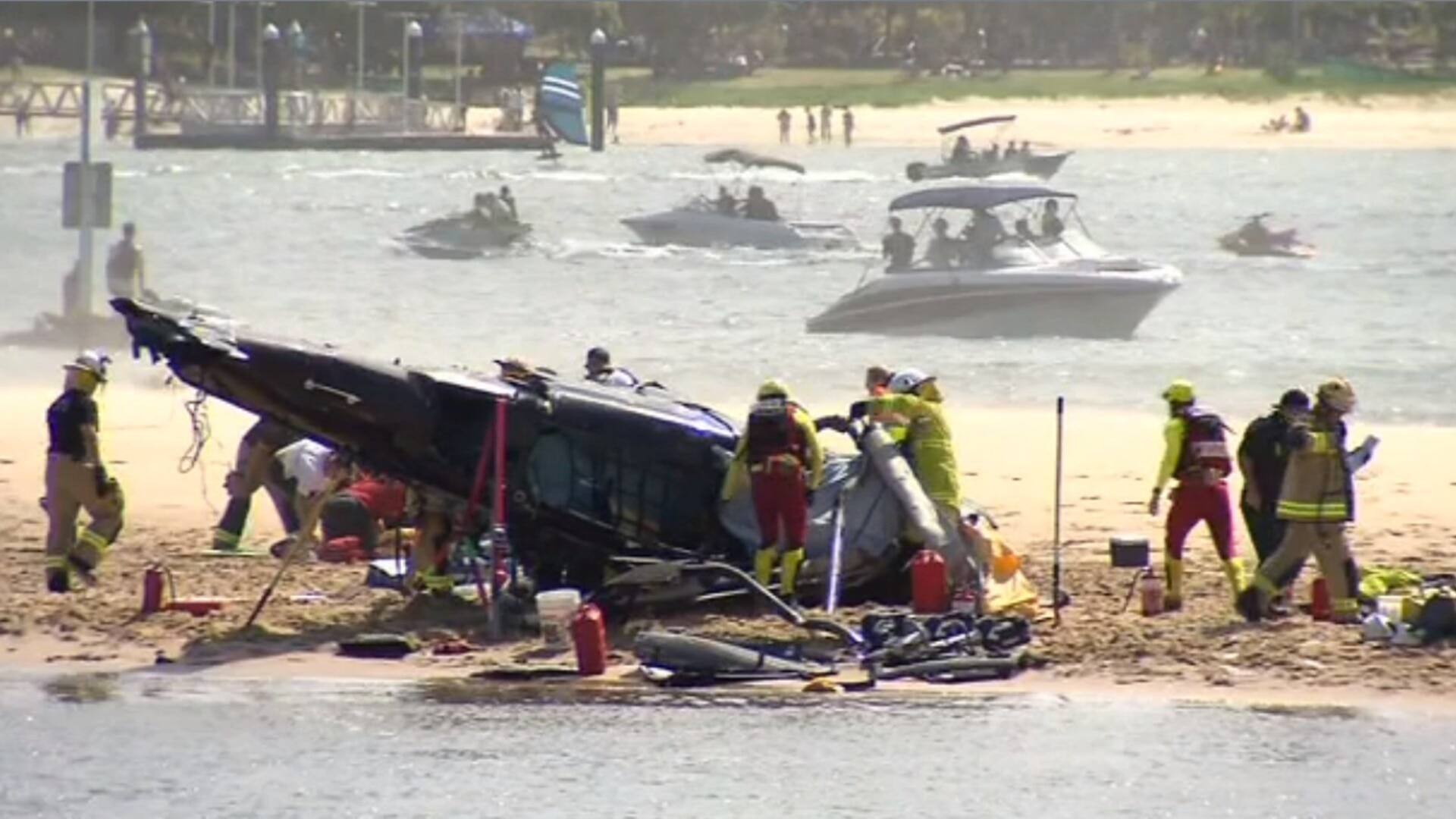
He gives them a hug and a kiss before they head to the terminal.
“Have fun,” he says.
New Zealanders Elmarie and Riaan Steenberg and Edward and Marle Swart have come across the ditch for a getaway and make a “spur-of-the-minute” decision to visit Sea World and then an even more spontaneous decision to take a helicopter tour.
Geelong mum Winnie De Silva and her son Leon also sign up for a joy flight.
Leon isn’t especially keen, but his mum tells him not to worry.
After all, what’s the worst that could happen?
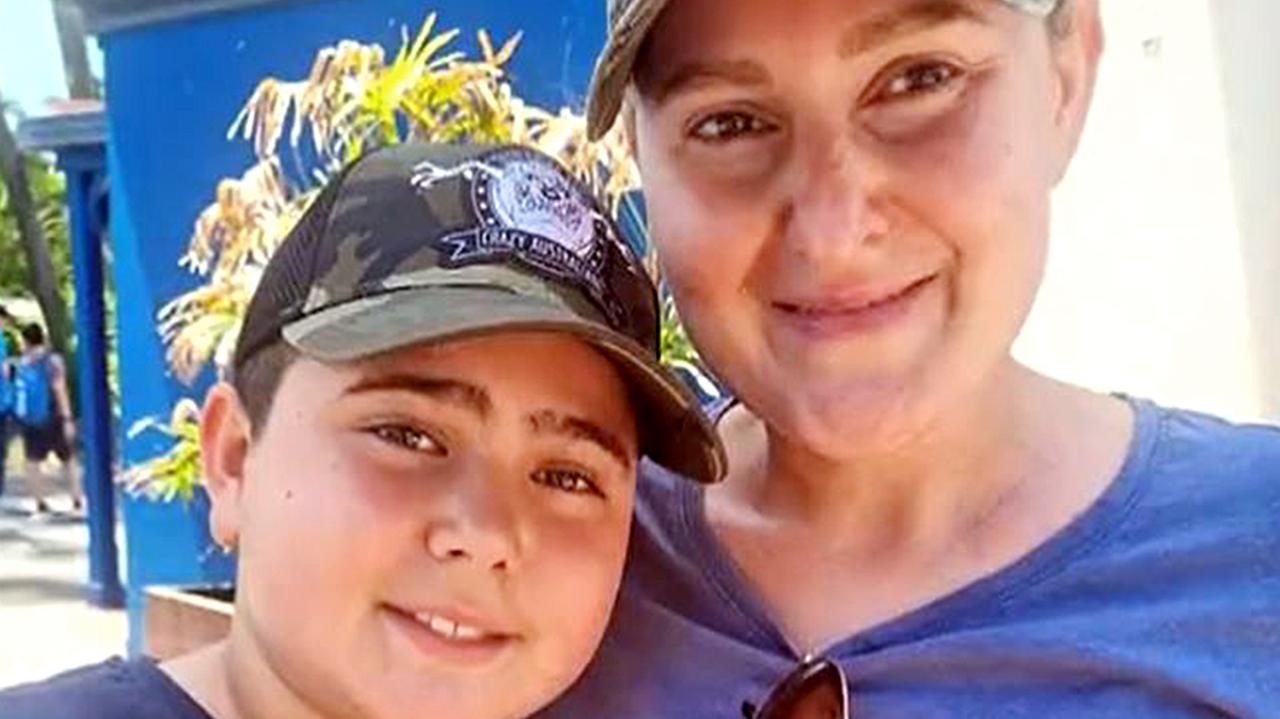
Groups of strangers who would forever be bound by what happened next arrive at the Sea World Helicopters terminal ahead of their early afternoon flight.
The Steenbergs and Swarts head down to the helipad alongside a WA man who has never been publicly identified.
Michael James, an experienced pilot and Sea World Helicopters’ safety manager, is waiting for them.
As they prepare to take off, Mrs Tadros, Nicky, Ms De Silva and Leon await their own flight alongside Mr and Mrs Hughes.
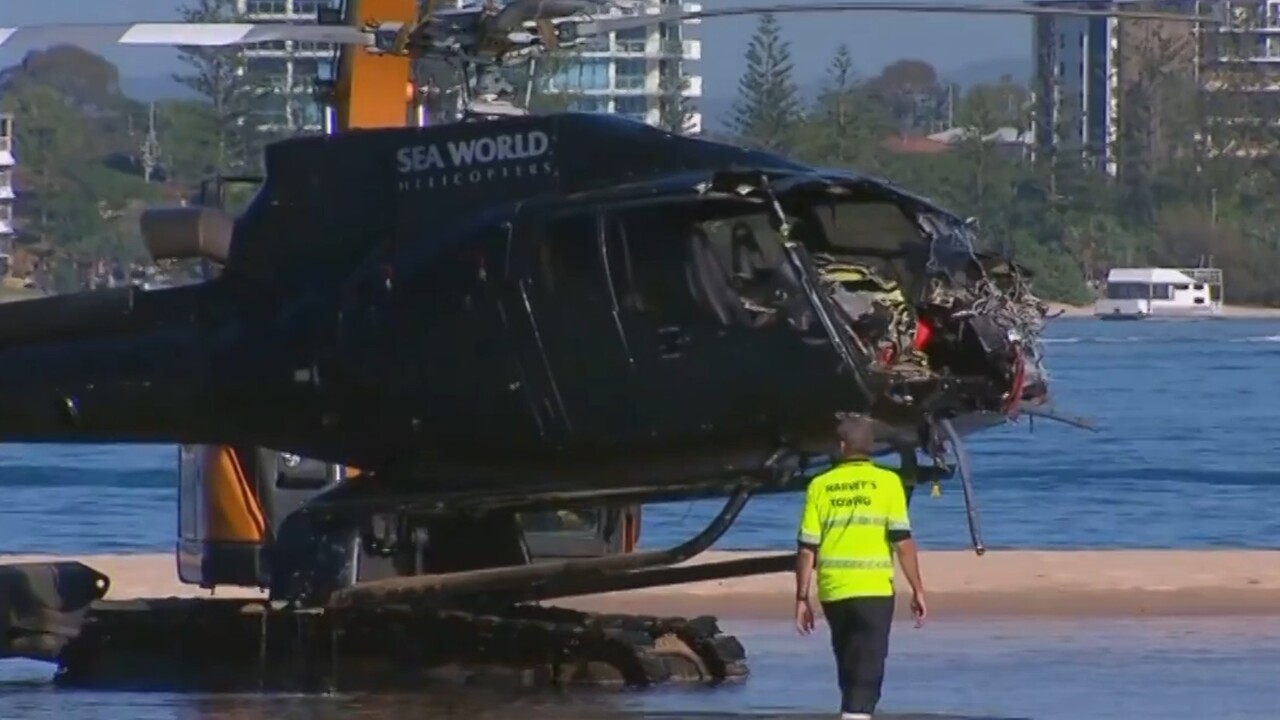
They watch an instructional safety demo – a demonstration the ATSB investigation would later find had “limited, inconsistent and incorrect information”, before heading out on the helipad to join chief pilot Ash Jenkinson for the five-minute flight over the Broadwater.
Seatbelts are fitted, doors are closed and a ground crew member gives a thumbs up.
At 1.55pm, Mr Jenkinson, a 40-year-old pilot with a loving fiancee, one-year-old son and 6210 hours of flying time under his belt, takes off.
Out on the Broadwater, Gold Coast businessman Pat McCarthy is enjoying a day on the boat with his partner and daughters Ainsley and Ava.
Ainsley, a student pilot, watches the scene unfolding.
“Hey, Dad,” she asks.
“Do those helicopters look pretty close together?”
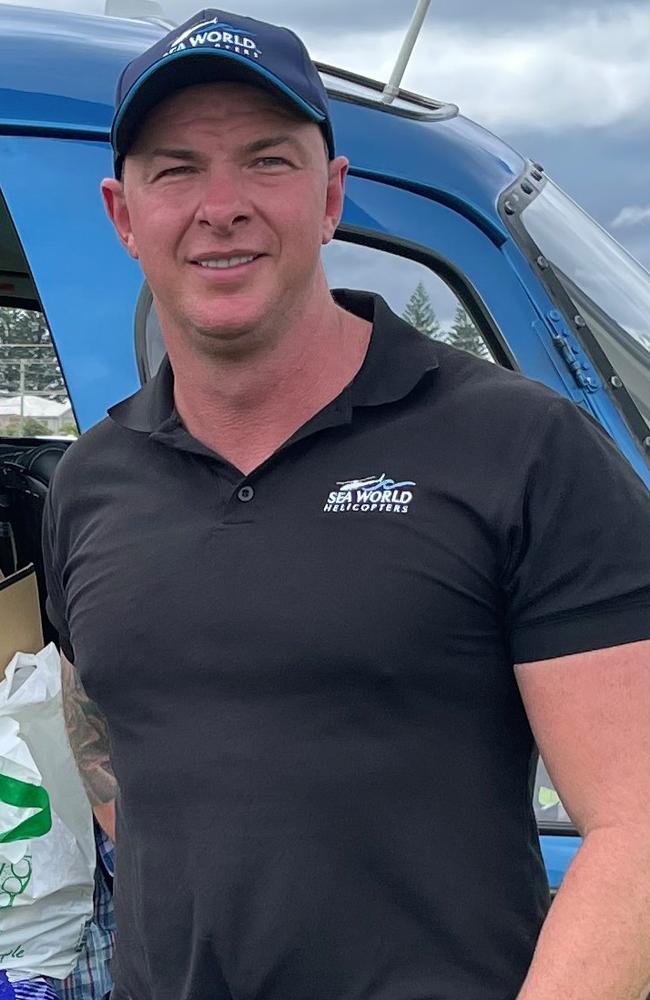
Scores of tourists at the theme park also watch as Mr Jenkinson’s chopper takes off while the craft carrying Mr James and five passengers prepares to land.
Some have phones out recording the action.
In one video, a young boy is heard asking: “Are they gunna crash?”
Inside the cockpit of Mr James’ chopper, the Steenbergs and Swarts have their devices out recording the spectacular view of the Broadwater and the sparkling Pacific Ocean beyond when a passenger points out the left side window before frantically tugging at the veteran pilot’s shoulder.
Glass breaks and the cockpit shudders. It is 1.56pm and six seconds.
In the other helicopter, with wreckage, wires and wind streaming past her face, Ms De Silva thinks she is going to die, but makes a solemn vow that death will not take her as she hurtles towards the earth.
The chopper slams onto the edge of the sandbank, and in the words of one witness “all hell broke loose”.
A future inquest will probe the deaths of Mr Jenkinson, Mr and Mrs Hughes and Mrs Tadros, but none of the four are responsive by the time help arrives.
Three other passengers, however, are very much alive.
Mr Tadros had seen his wife and son take off, but the collision is obscured from his vision.
He hears “a big bang” and seconds later sees the wreckage on the sandbank but has no idea which chopper is which.
Mrs Manns, who sees the helicopters collide, grabs her daughter from the car park and runs to the chopper terminal.
In documents submitted as part of her family’s lawsuit, she says she looked frantically at the commotion on the sandbank, trying desperately to see if any of the people wandering around the scene are her father or stepmum.
After what seems like an eternity but must have only been minutes, she is given a police boat escort and heads across to the sandbank.
Mr McCarthy is already there.
“I just gunned the boat on full throttle and beached it on the sandbank,” he told The Courier-Mail on the anniversary of the tragedy.
“I screamed at the girls to stay on the boat and just ran across the sand.
“The other chopper hadn’t even landed yet.
“I could see debris raining down and I thought, ‘holy hell, there’s going to be casualties on the ground’.”
Dave Costa, another boatie who happened to be nearby, has also arrived, and the two men – complete strangers, rush to the wreckage.
Using pieces of debris and their bare hands, they try to dig a channel through the sand to free Ms De Silva and the two young boys.
They hold the young mum’s hand and douse her with buckets of sea water to wash away the aviation fuel pouring through the cockpit.
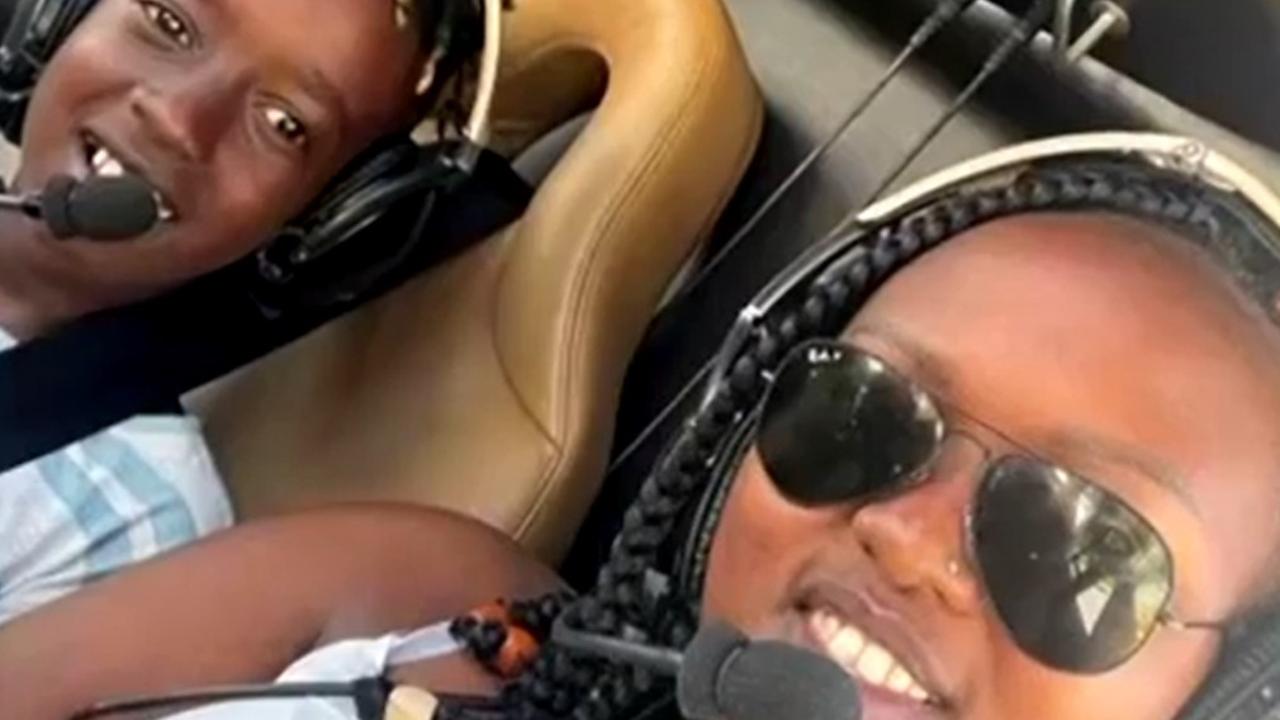
By this time Mr James has managed to somehow land his badly-damaged chopper on the sandbank in a feat which sees him hailed a “hero”.
Everyone on-board emerges from the aircraft shocked, shaken and covered in cuts and scratches, but able to walk away.
Mr James is later photographed walking up a gangway back on shore, still wearing his pilot uniform and aviator sunglasses, but bearing visible wounds, blood trickling down his face.
After surviving the worst Gold Coast aviation disaster since seven people died on South Stradbroke Island in 1991, Mr James will be dead just 18 months later aged 53 after a brave but brutal battle with cancer.
He never flew a helicopter again.
The ATSB’s preliminary report reveals Mr Jenkinson had traces of cocaine in his system at the time of the crash, most likely taken a day or two prior.
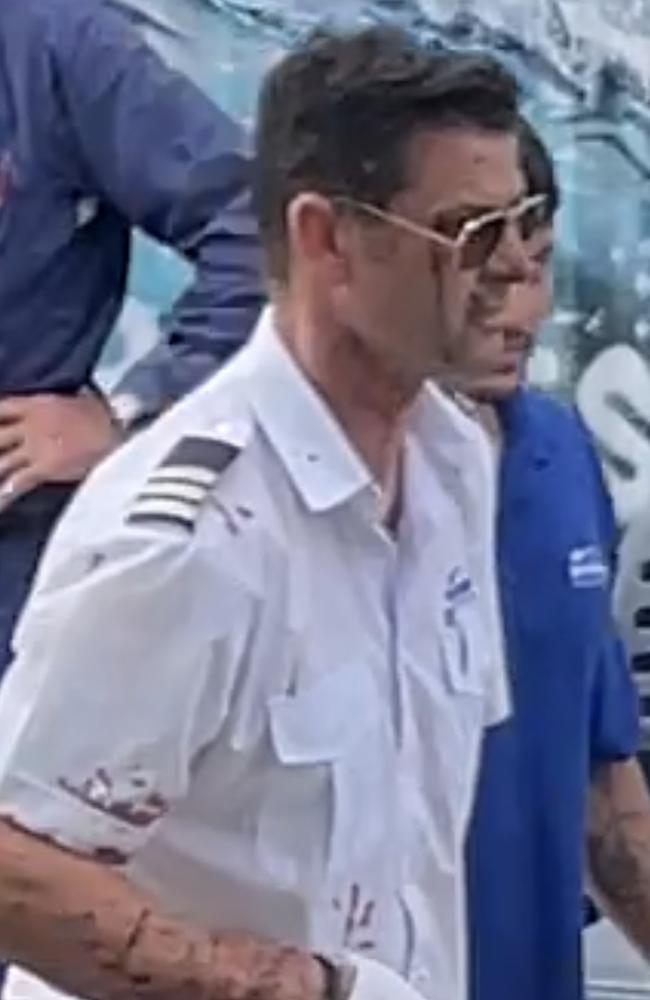
His family say that is not what they want him remembered for, instead referring to a loving father and kind-hearted man who volunteered to deliver supplies to communities ravaged by fire, floods and other natural disasters.
All three survivors from Mr Jenkinson’s chopper spend several weeks in hospital before being released to pick up the pieces of their lives.
For young Nicky Tadros, that means adjusting to life as an amputee after doctors were forced to remove his right leg.
He has learnt to live with a prosthetic leg and made headlines less than a year later by earning a black belt in karate.
The journey has been challenging for Ms De Silva and her son who were forced to endure the early stages of their recovery in different hospitals and are still struggling to come to terms with what happened.
A coronial inquest is on the horizon, along with multiple lawsuits and compensation claims.
That fateful five-minute joy flight has started a journey that will last a lifetime.
Originally published as Sea World helicopter crash: Inside one of the Gold Coast’s darkest days




